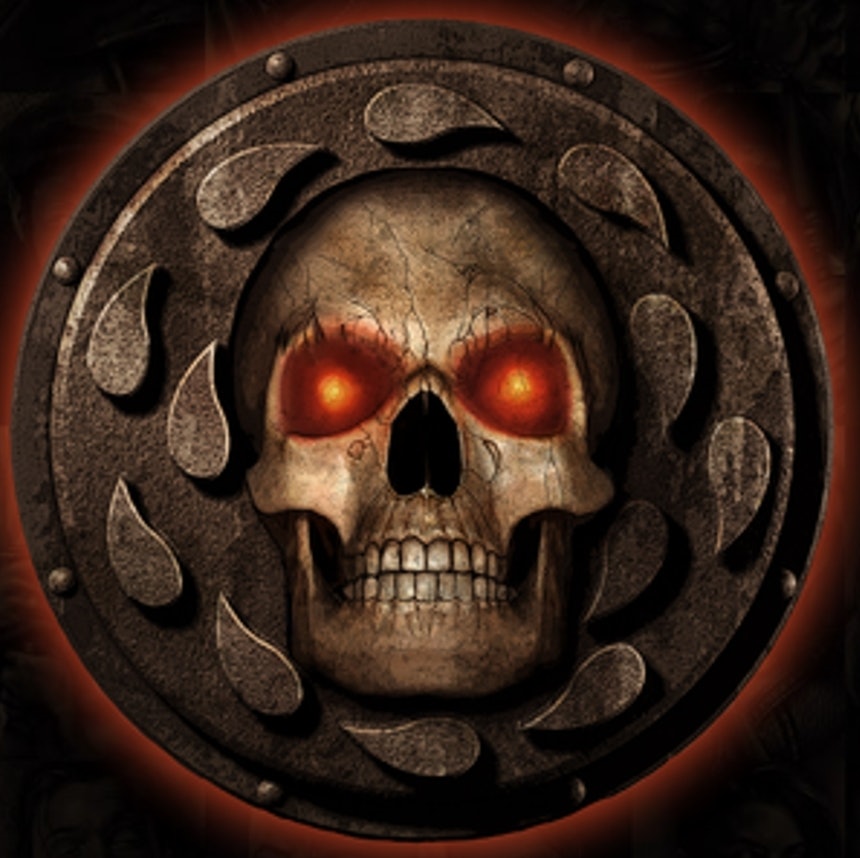
In a year of big games, Baldur’s Gate 3 was the biggest. The accolades Inverse’s Game of the Year has picked up are endless, but Dungeons & Dragons’ prominence atop gaming was far from inevitable. There was a 23-year wait after Baldur’s Gate II: Shadows of Amn, and it took years of releases like Pillars of Eternity and Divinity: Original Sin to prove the dormant computer role-playing game (CRPG) genre could appeal to modern tastes.
This revival has produced some phenomenal titles, but it’s actually the second time the genre has been saved. Well before Baldur’s Gate 3 definitively proved that story-driven RPGs are here to stay, the original Baldur’s Gate (released 25 years ago on December 21, 1998) saved the genre from itself.
By the late ’80s, the CRPG was in a golden age. Titles like Ultima and Wizardry brought the pen-and-paper experience to the personal computer, and 1988’s well-received Pool of Radiance gave gamers their first taste of digital Dungeons & Dragons. But a decade later, that taste had soured. In a misguided and failed attempt to hit the holiday season, Interplay rushed out Descent to Undermountain, a buggy, boring, ill-conceived mess.
In a 2004 retrospective of D&D games, GameSpy said Undermountain’s only redeeming feature was that it made fans forget “the entire previous two years of atrocious Dungeons & Dragons games.” Undermountain was symbolic of a genre in crisis: graphical advances made development expensive and time-consuming, larger design teams struggled to innovate and squash bugs, and flashy, ambitious Japanese console RPGs like Final Fantasy VII crushed PC titles on the sales charts. Even if the CRPG survived, it looked like D&D games wouldn’t.
Then Baldur’s Gate, expected to be a sales dud that packed the last shovelful of soil onto the grave, arrived.

Its story about the player’s attempt to unravel a bandit conspiracy while piecing together their mysterious background is entertaining, but what made Baldur’s Gate an instant classic was the dizzying freedom it offered. You could play as a sneaky thief or a head-crushing barbarian, while a staggering 25 different companions were available… if they agreed with your worldview. Unlike the be nice or be rude buttons of many RPGs, your attitude towards moral conundrums (or your propensity for random murder) could give you entirely different parties and experiences across playthroughs.
If Baldur’s Gate 3 was your introduction to the genre, you’ll find Baldur’s Gate tough sledding. You’ll need to read the manual to have any real idea of what you’re doing, and even then it’s easy to accidentally build a terrible protagonist or soft-lock yourself in a dungeon with enemies you’re unprepared for. If you don’t recognize terms like THAC0, the first wolf you stumble across could rip your throat out. Pick a bad fight and you’ll be dead before you have any idea what happened. Pick a good fight and you can still be felled by bad luck. Based on Advanced Dungeons & Dragons, the dorkiest ruleset of an already dorky pastime, Baldur’s Gate is an obtuse, unforgiving game.
It’s also an immensely rewarding one. All the story’s cogs slowly come together in a satisfying manner, and venturing off into the wilderness just to see what’s out there can lead to loot and peril. That may sound like old hat, but in 1998, it felt like the culmination of an ideal RPG developers had been striving towards for decades. It really does feel like D&D, from the bizarre subplots you’ll stumble into to the obscure monsters that will give you conniptions.
Ironically, much of what makes Baldur’s Gate feel old-fashioned was once avant-garde. Its combat — real-time, but with the ability to pause and issue orders — made hardcore fans worry D&D’s turn-based roots had been abandoned. But the system works well, allowing you to speed through random goblins while carefully planning encounters with dangerous wizards. A newfangled quick save option lets you take wild swings and then immediately undo your blunders, and the same gameplay depth that can overwhelm neophytes allows you to come up with ridiculous solutions to the obstacles thrown at you.

All that is thanks to the hard work of a little studio called BioWare, which had a grand total of one game — a blatant MechWarrior knockoff — to its name. Development took three years and included the construction of a brand new game engine, one that gives Baldur’s Gate a certain timeless look. The team had little game development experience but reams of D&D under their enchanted belts, and in the ’90s, that was enough for Interplay to trust it with a license now worth millions.
That trust was rewarded. Hoping to sell 200,000 copies, Baldur’s Gate eventually moved 2.8 million. The unexpected phenomenon justified an expansion pack and a sequel, both of which cemented BioWare’s reputation as the modern RPG studio. Hits like Knights of the Old Republic and Mass Effect followed, but BioWare later moved away from the genre that put it on the map. Ironically, the studio is now struggling with the fallout of Anthem’s live service boondoggle even as the humble CRPG enjoys a tremendous resurgence thanks to Larian Studios.
Baldur’s Gate 3 is more of a spiritual successor than a direct sequel, but it captures the original’s “Go anywhere, do anything, and see what happens” ethos. Modern CRPGs are far more polished than Baldur’s Gate, which can frustrate as much as thrill. But if you can embrace the fact that Baldur’s Gate will try to chop your hand off instead of holding it, you’ll find both an epic adventure and an educational look at the genre’s roots. Just remember to stock up on Protection From Petrification scrolls. You’ll thank us later.







